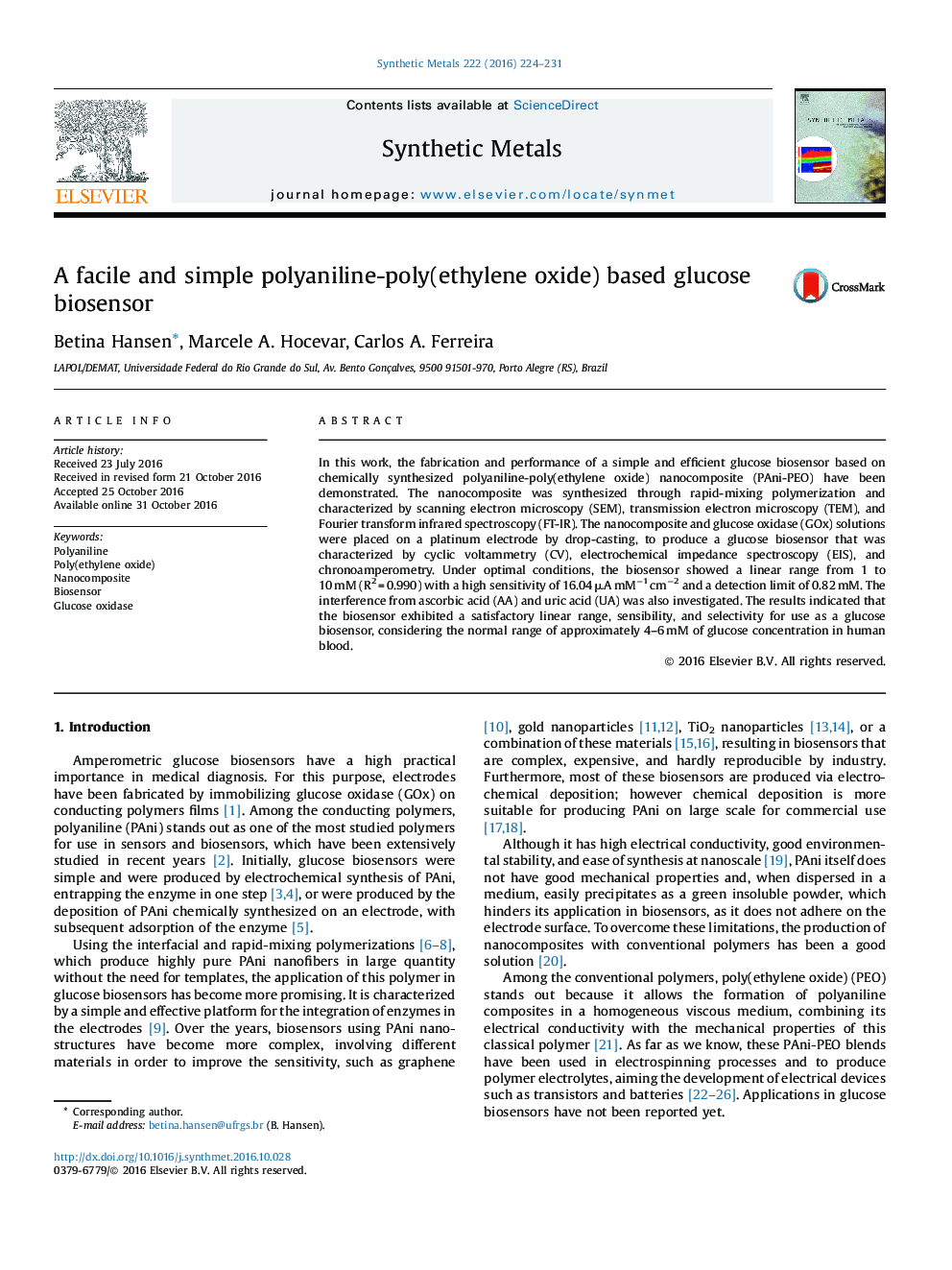| Article ID | Journal | Published Year | Pages | File Type |
|---|---|---|---|---|
| 5435511 | Synthetic Metals | 2016 | 8 Pages |
â¢Glucose biosensor produced with nanofibers of PAni-PEO in dispersion.â¢Simple and efficient biosensor without the need for complex and expensive materials.â¢Parameters were optimized to produce an efficient and reproducible biosensor.â¢Fast amperometric response, selectivity and wide linear range were obtained.
In this work, the fabrication and performance of a simple and efficient glucose biosensor based on chemically synthesized polyaniline-poly(ethylene oxide) nanocomposite (PAni-PEO) have been demonstrated. The nanocomposite was synthesized through rapid-mixing polymerization and characterized by scanning electron microscopy (SEM), transmission electron microscopy (TEM), and Fourier transform infrared spectroscopy (FT-IR). The nanocomposite and glucose oxidase (GOx) solutions were placed on a platinum electrode by drop-casting, to produce a glucose biosensor that was characterized by cyclic voltammetry (CV), electrochemical impedance spectroscopy (EIS), and chronoamperometry. Under optimal conditions, the biosensor showed a linear range from 1 to 10 mM (R2 = 0.990) with a high sensitivity of 16.04 μA mMâ1 cmâ2 and a detection limit of 0.82 mM. The interference from ascorbic acid (AA) and uric acid (UA) was also investigated. The results indicated that the biosensor exhibited a satisfactory linear range, sensibility, and selectivity for use as a glucose biosensor, considering the normal range of approximately 4-6 mM of glucose concentration in human blood.
